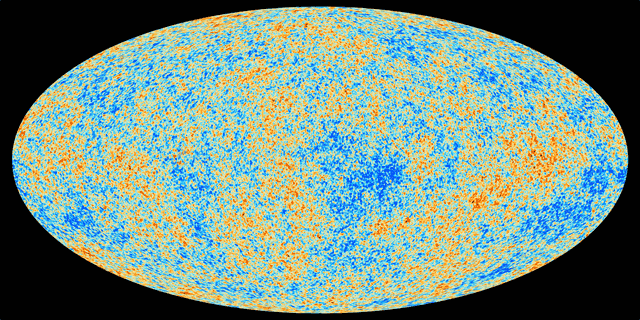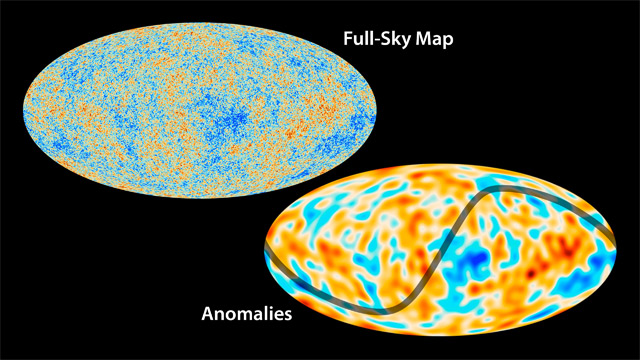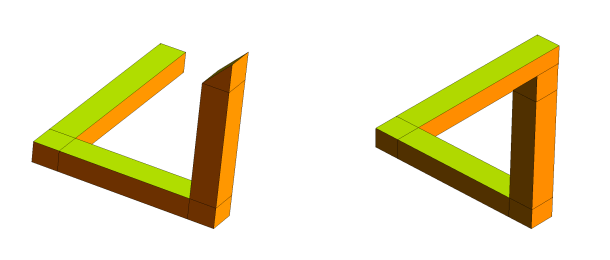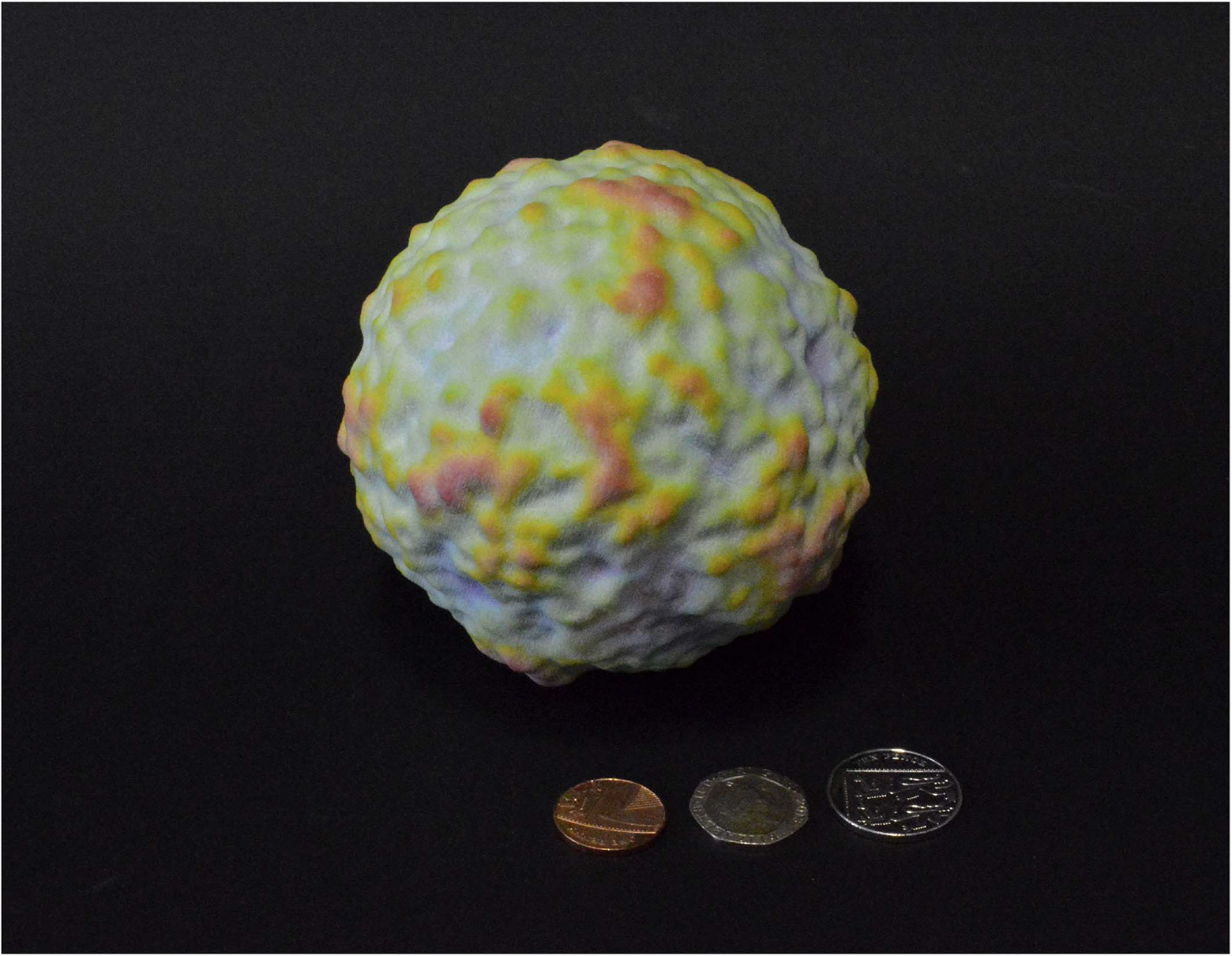Published 3D model of the cosmic microwave background radiation for printing

Not sure how to decorate your desktop? How do you like this option: a small copy of the early universe. Namely, the sphere of relic radiation - the microwave background radiation filling the Universe, which arose in the epoch of the primary recombination of hydrogen.
This is not just a beautiful souvenir, but a scientifically verified model, compiled according to the data of the Planck Space Observatory. It can be used as a textbook. Along with the cosmological redshift, the CMB is considered as one of the main confirmations of the Big Bang theory.
According to the Big Bang theory, the early Universe was a hot plasma of electrons, protons and photons. In this plasma, photons were constantly emitted, collided with other particles and absorbed. As the universe expanded, the cosmological redshift caused the plasma to cool down, so that at a certain stage the slowed electrons began to combine with the slowed protons, forming the first atoms in the universe (this process is called primary recombination of hydrogen). This happened about 380,000 years after the Big Bang, at a plasma temperature of around 3,000 ° K.
')
Since then, some photons have been able to move freely in space, practically not interacting with matter. Relic radiation - those ancient photons that were emitted by the plasma of the early Universe after the Big Bang towards the future location of the Earth. After 13.8 billion years, photons still come to us, because the expansion of the universe is still going on.
Now the radiation temperature is about 2.7 ° K. It comes from all sides almost evenly.
The observable Universe refracted through relict radiation is called the last scattering surface. This is the most distant object that we can observe.
An interesting phenomenon of relic radiation is its anisotropy, that is, heterogeneity. In March 2013, the specialists of the European Space Agency published the most detailed relic radiation map compiled from the results of the data collected by the Planck Space Observatory since 2009.

On this map are clearly visible two strange phenomena. The first is the change in the amplitude of temperatures in the two halves of the Universe.

The change in temperature amplitude in the two halves of the universe
The second phenomenon is an unusually large cold spot, clearly visible on the map. Previously, experts believed that this is a measurement error. But the Planck Observatory provided more accurate information, confirming the effect.

Comparison of the resolution of astronomical satellites recording relic radiation
According to scientists, the irregularity of the CMB - temperature fluctuations - is explained by plasma oscillations in the tiny early Universe soon after the Big Bang.
Traditionally, temperature fluctuations are represented by areas of different colors. For example, the hottest areas are red, and the coldest ones are blue. These areas are projected onto a flat map using standard stereographic projection . There were attempts to create computer 3D-models of the sphere of the background radiation, which the user could rotate and view on the screen. But in this case, information about anisotropy was transmitted by the same visual principle through the color scale.
Graduate students of the Department of Physics at Imperial College London offered a new way to visualize with 3D printing . In the sphere of relic radiation, designed by them, regions of different temperatures are felt not only visually, but also tactilely. In their opinion, portable relic radiation, which can be taken in hand, has several advantages in educational and scientific work, and is especially useful for people with visual impairments.
Previously, 3D printing has already been used to visualize mathematical functions and simulation results of complex systems .

Penrose's Triangle is one of the impossible figures that Knill and Slavkovsky tried to print on a 3D printer, the authors of the paper “ Illustration of Mathematics Using 3D Printers ”
The CMB sphere is another example of the useful use of 3D printing for scientific purposes. Young British scientists used MeshLab, Cura, Blender !, Netfabb and others to transform the scientific data from the Space Observatory "Plank" into the STL format.
The scientific work was published in the journal European Journal of Physics (doi: 10.1088 / 0143-0807 / 38/1/015601).
Files for printing are posted separately on the scientific hosting Zenodo.
128_scaled.stl - An STL file for printing the monochrome version (the researchers used an Ultimaker printer).
cmbhollow.wrl - a VRML file for coloring a product in a ZPrinter.

A similar method is suitable for visualizing other scientific data, including the results of astronomical observations. For example, for printing topographic maps of planets, models of surfaces and the internal structure of stars, the distribution of stars in galaxies, the distribution of matter in the scale model of the Universe. In a sense, this work can be considered as the first conceptual model for a large number of potential use cases.
Source: https://habr.com/ru/post/398627/
All Articles